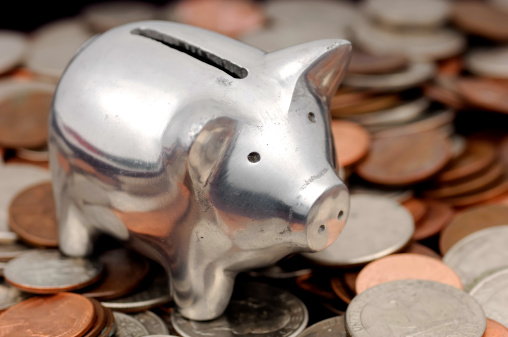Banking, finance, and taxes
Which Bank Will Have the Best Earnings?
Published:
Last Updated:

Here is a look at what to expect from the country’s largest financial institutions. On Tuesday, JPMorgan Chase & Co. (NYSE: JPM) and Wells Fargo & Co. (NYSE: WFC) are scheduled to report second-quarter earnings. On Wednesday, we will hear from Bank of America Corp. (NYSE: BAC), and Thursday brings reports from Citigroup Inc. (NYSE: C) and Goldman Sachs Group Inc. (NYSE: GS).
JPMorgan Chase is expected to post earnings per share (EPS) of $1.44 on revenues of $24.53 billion. In the year-ago quarter, the bank reported EPS of $1.46 on revenues of $25.35 billion. JPMorgan beat estimates last quarter with numbers roughly equal to the consensus estimates for the second quarter. The stock price rose nearly 12% in the quarter, the best of any of the big banks. The bank is still shrinking somewhat, but first-quarter results were able to overcome the decline by taking advantage of the volatility in the markets caused by macro events. If JPMorgan can control its expenses, it should have another decent quarter. The bank’s forward price-to-earnings (P/E) ratio is 10.22 and the price-to-book ratio is 1.13. The consensus price target is $71.57, and shares closed at $66.11 on Thursday, implying a potential gain of about 8.3%.
ALSO READ: 10 Big Family Business Stocks That Beat the Market
Wells Fargo is tabbed to report EPS of $1.03 on revenues of $21.68 billion. In the second quarter of 2014, the bank posted EPS of $1.01 on revenues of $21.07 billion, and first-quarter EPS came in at $1.04, a 6% surprise to the upside. Wells Fargo’s share price rose just 3.4% in the second quarter, the smallest gain among the big banks. The bank’s revenue growth is predicated on increases in service charges, fees and mortgage banking. Investment banking is likely to be a soft spot. The consensus price target for Wells Fargo is $58.49, and shares closed at $55.50 on Thursday, for an implied upside of about 5.4%. The bank’s forward P/E ratio is 12.36 and its price-to-book ratio is 1.69.
Consensus estimates call for Bank of America to post second-quarter EPS of $0.36 on revenues of $21.32 billion. In the same quarter last year, the bank reported EPS of $0.19 on revenues of $21.96 billion. First-quarter EPS missed the consensus estimate by two cents for a downside surprise of nearly 7%. The stock price rose 10.6% during the second quarter, putting it third among these five banks. The bank is expected to continue its cost-cutting ways, and operational efficiency may be a more potent driver of revenues and profits than anything else. The forward P/E ratio is 10.36 and the price-to-book ratio is 0.75. The consensus price target for the stock is $18.34, and shares closed at $16.48, for an implied upside of about 11.3%.
Citigroup is expected to post second-quarter EPS of $1.35 on revenues of $19.15 billion, compared with EPS of $0.03 on revenues of $19.38 billion in the year-ago quarter. Citi posted EPS of $1.51 in the first quarter, an upside surprise of 8.6%. Whether that was due to good performance or lowered expectations is arguable — the bank had missed expectations for three consecutive quarters before that. The issue, then, is did last quarter mark a turnaround or was it an anomaly? The answer probably lies in whether the consumer banking segment can make up for shrinking trading and investment segments. The consensus price target on the stock is $63.60, and shares closed at $53.71 on Thursday, implying an upside of 15.6%. The forward P/E ratio is 9.04, and the price-to-book ratio is 0.79. Shares added 7.2% in the second quarter, topping only Wells Fargo’s gain among these five banks.
ALSO READ: 5 Big Defensive Dividend Stocks to Buy Trading at Deep Discounts
The consensus estimates for Goldman Sachs call for EPS of $3.92 on revenues of $8.81 billion. In the second quarter of 2014, the bank posted EPS of $4.10 on revenues of $9.12 billion. First-quarter 2015 EPS totaled $5.94, an upside surprise of nearly 40%. Goldman’s stock was the second best performer in the quarter, with a gain of just over 11%. Much depends of the performance of Goldman’s fixed income group, where revenues may drop as much as 15%. On the plus side, mergers and acquisitions fees should improve, and the bank’s investing and lending revenues are expected to rise. The forward P/E ratio is 10.33, and the price-to book ratio is 1.22. The bank’s consensus stock price target is $216.00, and shares closed at $204.81 on Thursday, for an implied upside of about 5.5%.
If you’re one of the over 4 Million Americans set to retire this year, you may want to pay attention. Many people have worked their whole lives preparing to retire without ever knowing the answer to the most important question: am I ahead, or behind on my goals?
Don’t make the same mistake. It’s an easy question to answer. A quick conversation with a financial advisor can help you unpack your savings, spending, and goals for your money. With Zoe Financial’s free matching tool, you can connect with trusted financial advisors in minutes.
Why wait? Click here to get started today!
Thank you for reading! Have some feedback for us?
Contact the 24/7 Wall St. editorial team.